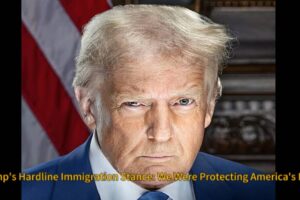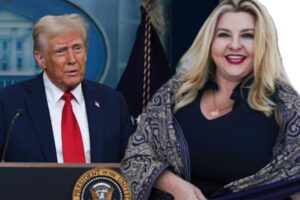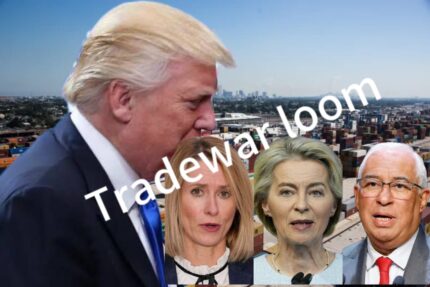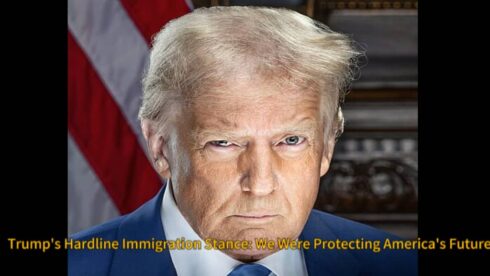President Donald Trump has announced a bold new trade initiative aimed at imposing “reciprocal tariffs” on countries that he believes unfairly tax U.S. exports. This plan, which is expected to take effect as early as April, could significantly alter global trade dynamics. Key targets include the European Union, India, Japan, Brazil, and other nations with high tariffs or restrictive trade practices against American goods.
Trump’s move has drawn a mix of reactions from economists, trade partners, and global markets, with some warning of potential trade wars while others see an opportunity for fairer U.S. trade terms.
The Strategy Behind Reciprocal Trump Tariffs
President Trump’s “reciprocal tariff” strategy aims to level the playing field in global trade. Under this plan, the U.S. will impose tariffs equivalent to those placed on American goods by other nations. If a country enforces a 10% tariff on U.S. products, the U.S. will respond with a matching 10% tariff on imports from that country.
The administration has also flagged additional trade barriers such as the European Union’s Value Added Tax (VAT) and digital services taxes, which Washington argues disproportionately affect U.S. technology firms. Trump’s team believes these measures create an uneven competitive environment, forcing American businesses to pay more while foreign firms enjoy better access to U.S. markets.
Commerce Secretary-designate Howard Lutnick has indicated that a full review of trade policies will be completed by April 1. The administration will then determine the extent of the new tariffs and implement them accordingly.
Countries in the Crosshairs
The European Union is among the key targets of Trump’s plan. The administration has pointed to the EU’s 10% import duty on American-made cars, compared to the U.S.’s 2.5% duty on European vehicles, as an example of unfair trade practices. There is growing concern that unless the EU lowers its tariffs, it may face steep U.S. retaliatory measures.
India, which has previously reduced tariffs on certain American imports, is also under scrutiny. Trump has cited high Indian duties on motorcycles and agricultural goods as reasons for further trade negotiations. At a joint press conference with Indian Prime Minister Narendra Modi, Trump declared, “Whatever India charges us, we will charge them.”
Other nations, including China, Japan, and South Korea, have also been identified for potential tariff adjustments. Brazil’s 18% tariff on American ethanol has been highlighted as another unfair trade barrier that may face U.S. countermeasures.
Economic and Market Reactions
The announcement of reciprocal tariffs has led to a mixed response in financial markets. U.S. stock indexes initially rose following Trump’s announcement, but investors remain wary of potential inflationary effects. Bond yields fell, reflecting some concerns over economic uncertainty.
Economists are divided on the long-term impact of these tariffs. Supporters argue that they will boost domestic manufacturing and reduce the U.S. trade deficit, a key focus of Trump’s economic policy. Critics, however, warn that higher import costs could lead to price hikes for American consumers and businesses, ultimately fueling inflation.
Wall Street analysts note that the Federal Reserve’s decision-making on interest rates may be influenced by any inflationary effects of the tariffs. Some experts predict that a prolonged trade dispute could disrupt supply chains and slow economic growth.
Global Response and Potential Trade War
Foreign governments have reacted cautiously to Trump’s new tariff policy. The European Union has signaled a willingness to negotiate on certain trade issues, particularly automotive tariffs, but remains firm on maintaining its VAT system. Olof Gill, the EU’s trade spokesperson, stated, “We stand ready to protect our interests but will continue to seek constructive engagement with the U.S.”
India has already taken steps to reduce certain tariffs, but ongoing negotiations will determine whether the country will make further concessions. Meanwhile, officials in Thailand and Vietnam have indicated that they are reviewing their trade agreements with the U.S. in light of Trump’s directive.
While some nations may choose to negotiate, others could retaliate with their own tariffs on U.S. exports. Economists warn that escalating tariff disputes could trigger a full-scale trade war, disrupting global commerce and potentially harming both American businesses and foreign economies.
What Comes Next?
Trump’s plan has set the stage for intense trade negotiations in the coming months. The Commerce Department is expected to finalize its tariff recommendations by April 1, after which new levies could be implemented. The president has emphasized that these measures are intended to create fairer trade conditions and encourage foreign investment in U.S. manufacturing.
However, the long-term success of the initiative will depend on how affected countries respond. If trade partners agree to lower their tariffs on American goods, Trump’s strategy could be seen as a victory. If they retaliate with their own tariffs, the U.S. could find itself in a protracted trade conflict with some of its biggest economic allies.
As global markets watch closely, the coming months will be crucial in determining the impact of Trump’s trade war strategy on both the U.S. and the broader international economy.














